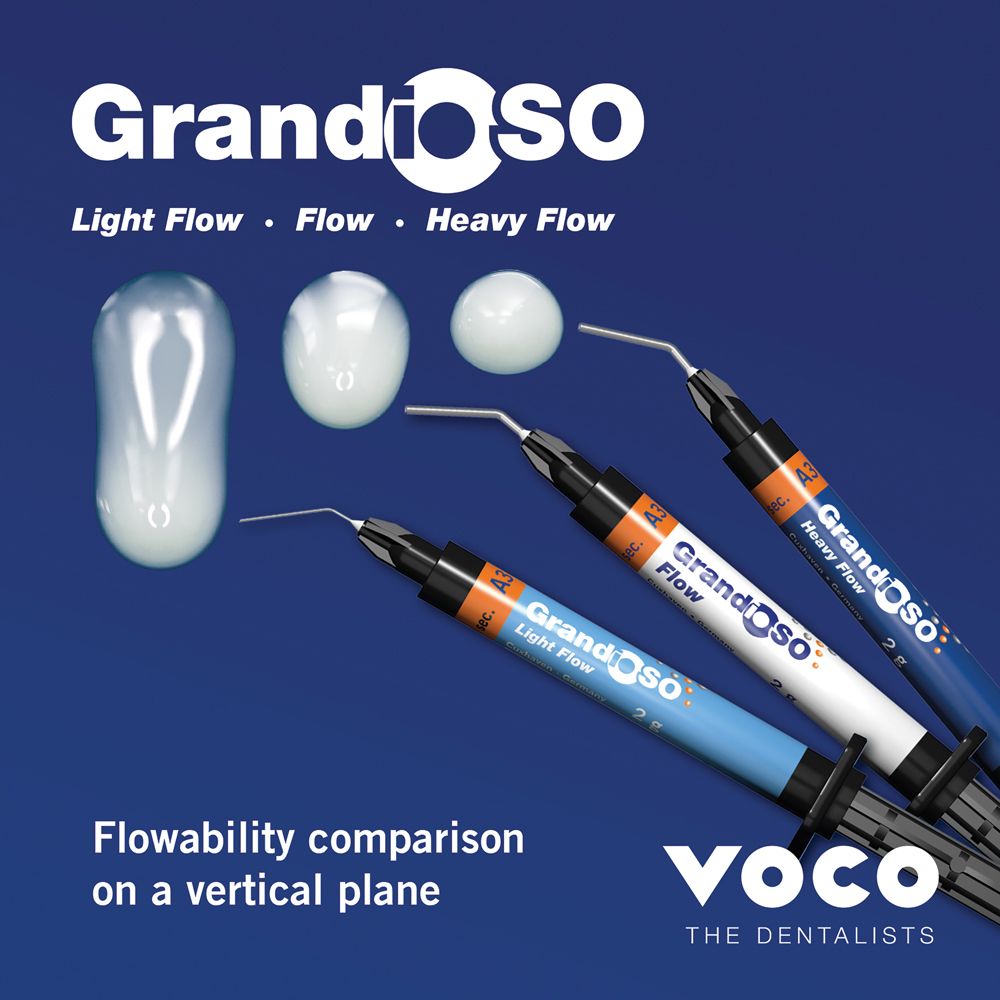Have you given any thought to the relationship of time and dentistry? Time is valuable and of the essence when treating our pediatric patients. Less appointment chair time is better when caring for children. Now think of how we strive for our restorations to last for a long time—in that case, more time is better.
Few things make me happier than restorations that have stood the test of time. Longevity of dental treatment firmly establishes quality, reliability, durability, and function. In the case of pediatric patients, the ultimate goal is to be able to quickly place restorations that will last an exceptionally long amount of time.
A 2016 study assessed what types of direct restorative materials were used in posterior teeth by US and Canadian pediatric dentists. Results revealed dentists are most inclined to use composite resin when placing Class I, II, and V restorations in primary and permanent teeth.1 Composite resin has been used routinely since the 1970s.2 Since then, however, composite resin materials have been improved in every way. Composite resin materials are available with superior wear and handling ability, which allows us to restore teeth esthetically and functionally and with the ability to preserve healthy tooth structure.3,4
Modified Snowplow Technique
But excellent materials alone are just 1 part of the equation. For successful restorations, technique is equally important and there are a multitude of composite resin placement techniques. One of the simplest and most effective methods for placement of composite resin is a modified snowplow technique. In this method, a thin layer of flowable composite is placed on the floor of the preparation as a liner, left uncured, and then followed by a bulk fill placement of composite. The bulk fill of composite acts as a snowplow would, pushing the uncured flowable into all the nooks and crannies, filling any voids or deficiencies, and resulting in a solid restoration.5,6 The material is then shaped. The flowable composite and packable composite are cured simultaneously.
GrandioSO Family of Flowables
This line of 3 flowables is designed to offer universal indications for use, including Class I to Class V restorations, as base and liners, extended fissure sealing, and more. Formulated to offer fill rates similar to that of packable composites, each of the GrandioSo products feature nonhybrid technology which utilizes nanoparticles that have been combined with glass-ceramic particles and a special resin matrix to give the materials a filler content said to exceed conventional flowable materials. The GrandioSO Light Flow is a 76% filled low-viscosity material. The GrandioSO Flow is an 81% filled medium-viscosity material, while the GrandioSO Heavy Flow is an 83% heavy-viscosity material that does not slump.
VOCO America
888-658-2584
vocoamerica.com
The flowable composite flows easily into areas that are too small for the packable composite to reach. This method shows effective control of microleakage and provides durable long-lasting results.7-11 It is critical to have proper working conditions. A proper dry field must be maintained. Due to the hydrophobic nature of composite resin materials, use of a rubber dam or isolation device is essential. Combining excellent dental materials, exact and reliable technique, and controlled field for operation will lead to treatment success.12
Case Studies
GrandioSO (VOCO America) first came to market in 2012, and now also is available in the GrandioSO x-tra esthetic nanohybrid bulk restorative formulation. This material boasts an 89% filler content for excellent wear rate, toothlike modulus of elasticity, and toothlike thermal expansion and flexural strength. It behaves similar to tooth structure in strength, elastic and thermal behavior, esthetics, and wear. GrandioSO truly is a toothlike composite. The postoperative photo is of a 4-year-old child treated with the first GrandioSO (Figure 1). Proximal caries on first and second primary molars have been filled with GrandioSO and are shown at 5-year recall (Figure 2). Following is the method used for preparation and restoration.
TOOTH PREPARATION: It is imperative to prepare the teeth appropriately and carefully for restoration with composite resin. Three key characteristics of the anatomy must be respected: enamel thickness, pulp size, and proximal contact. Primary dentition has thinner enamel compared with permanent dentition, so careful etch and bond are important. However, in addition, one must consider the occlusal surface, particularly in children who are bruxers. In order to safeguard the success of the restoration, mechanical retention should be incorporated. This is easily created in the form of gentle undercuts. Doing so ensures that a retentive preparation and intact restoration are maintained in all cases. Coronal pulp chambers are large in comparison with the crown of the pulp. Therefore, care must be taken not to expose or invade the pulp upon preparation. In other words, the cavity preparation must be conservative. Proximal contacts are broad and flat in primary dentition and require the careful use of appropriate wedging and matrices in order to create proper contact. Efficient wedging and use of matrices will ensure a tight seal at gingival margins to prevent moisture contamination. Proximal caries on first and second primary molars in a 6-year-old child have been filled with GrandioSO and are shown at a 2-year recall (Figure 3).
ADHESIVE: Proper adhesion is important. When comparing primary and permanent enamel and dentin bonding, there is much evidence that bond strengths are similar.13,14 The technique of choice is to use self-etch universal adhesives with a selective etch technique. The use of a selective etch technique with 1-step self-etch systems has been shown to increase the bonding effectiveness to both primary and permanent teeth.15 Phosphoric acid is used to etch the enamel surfaces of the preparation only—rinsed, and dried but not desiccated. Futurabond U (VOCO America) is brushed over the entire preparation and cured. Futurabond U has a great advantage for use in children—it is fast, simple, and reliable. It is a choice product due to its ease of application and its ability to be used as self etch, total etch, or selective etch.
RESTORATION: Once appropriately etched and bonded, restorative material can be placed. The use of flowable composite resin at the base of the preparation in the modified snowplow technique is to function as caulking. In this case, GrandioSO Heavy Flow shade A1 was used. It is highly filled with excellent handling. Flowables have the ability to adapt to the restoration and flex with the tooth, and microleakage is reportedly decreased. In this technique, GrandioSO Heavy Flow is placed in a thin layer on the gingival floor and in the area of the interproximal box.
Flowable composite should make up approximately 10% of the total volume of composite in the restoration. Critical to this technique is to leave this layer of flowable uncured. The snowplow technique relies then upon the packable composite to be placed in bulk and to push the flowable liner occlusally and gingivally. This allows for the flowable to fill in any voids as the packable is being extruded into the preparation. GrandioSO Heavy Flow shade A1 is placed smoothly and with steady pressure, avoiding pullback as the preparation is filled. At this point the materials are cured. A final layer of GrandioSO Heavy Flow is placed as a topcoat to properly seal any imperfections. The placement of a sealant has been shown to decrease microleakage and improve the longevity of the restoration.16
Figures 4-10 showcase another case using this same technique.
Longevity is a testament to the success of materials, technique, and appropriate patient and case selection. We strive for perfection and the goal is to create timeless restorations.
Conclusion
Time has given us a wide range of dental materials as companies continue to innovate and respond to the demands of dentists in the field as well as their patients’ needs. In terms of composites, many of these innovations revolve around making placement faster for dentists and make restorations longer lasting for patients—in both cases, the common thread is time. The fact that GrandioSO has lasted 10 years in a competitive marketplace is a testament to its being a fixture in time for practitioners and patients. Here’s to another 10 years!
References
1. Varughese RE, Andrews P, Sigal MJ, Azarpazhooh A. An assessment of direct restorative material use in posterior teeth by American and Canadian pediatric dentists: I. Material choice. Pediatr Dent. 2016;38(7):489-496.
2. Milnar FJ. The evolution of direct composites. Compend Contin Educ Dent. 2011;32(1):80-81.
3. Sensi LG, Strassler HE, Webley W. Direct composite resins. Inside Dentistry. 2007;3(7):76.
4. Fortin D, Vargas MA. The spectrum of composites: new techniques and materials. J Am Dent Assoc. 2000;131(suppl 131):26S-30S. doi:10.14219/jada.archive.2000.0399
5. Opdam NJ, Roeters JJ, Peters TC, Burgersdijk RC, Teunis M. Cavity wall adaptation and voids in adhesive Class I restorations. Dent Mater. 1996;12(4):230-235. doi:10.1016/s0109-5641(96)80028-5
6. Opdam NJM, Roeters JJM, Joosten M, vd Veeke O. Porosities and voids in Class I restorations placed by six operators using a packable or syringable composite. Dent Mater. 2002;18(1):58-63. doi:10.1016/s0109-5641(01)00020-3
7. Olmez A, Oztas N, Bodur H. The effect of flowable resin composite on microleakage and internal voids in class II composite restorations. Oper Dent. 2004;29(6):713-719.
8. Simi B, Suprabha B. Evaluation of microleakage in posterior nanocomposite restorations with adhesive liners. J Conserv Dent. 2011;14(2):178-181. doi:10.4103/0972-0707.82631
9. Radhika M, Saijan GS, Kumaraswamy BN, Mittal N. Effect of different placement techniques on marginal microleakage of deep class-II cavities restored with two composite resin formulations. J Conserv Dent. 2010;13(1):9-15. doi:10.4103/0972-0707.62633
10. Bücher K, Metz I, Pitchika V, Hickel R, Kühnisch J. Flowable composite as a direct restoration technique for primary molars. Eur J Paediatr Dent. 2017;18(3):243-246. doi:10.23804/ejpd.2017.18.03.13
11. Attar N, Turgut MD, Güngör HC. The effect of flowable resin composites as gingival increments on the microleakage of posterior resin composites. Oper Dent. 2004;29(2):162-167.
12. Chisini LA, Collares K, Cademartori MG, et al. Restorations in primary teeth: a systematic review on survival and reasons for failures. Int J Pediatr Dent. 2018;28(2):123-139. doi:10.1111/ipd.12346
13. Nör JE, Feigal RJ, Dennison JB, Edwards CA. Dentin bonding: SEM comparison of the resin-dentin interface in primary and permanent teeth. J Dent Res. 1996;75(6):1396-1403. doi:10.1177/00220345960750061101
14. Vashisth P, Mittal M, Goswami M, Chaudhary S, Dwivedi S. Bond strength and interfacial morphology of different dentin adhesives in primary teeth. J Dent (Tehran). 2014;11(2):179-187
15. Antoniazzi BF, Nicoloso GF, Lenzi TL, Soares FZM, Rocha RO. Selective acid etching improves the bond strength of universal adhesive to sound and demineralized enamel of primary teeth. J Adhes Dent. 2016;18(4):311-316. doi:10.3290/j.jad.a36154
16. dos Santos PH, Pavan S, Assunção WG, Consani S, Correr-Sobrinho L, Sinhoreti MAC. Influence of surface sealants on microleakage of composite resin restorations. J Dent Child (Chic). 2008;75(1):24-28.

